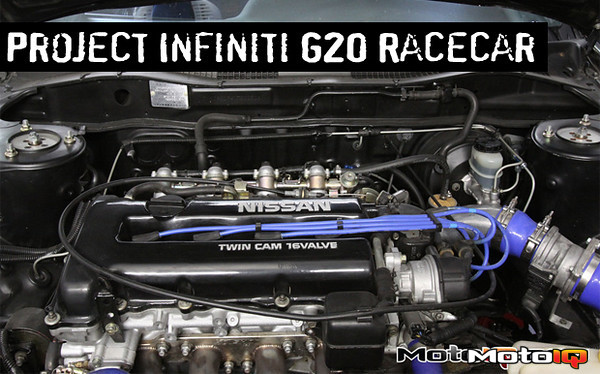,
JWT expends a lot of effort on properly engineering any product it makes. Before they set out to make a true set of competition cams (hence, the C-series name) that were a step above their already proven street cams (S-series), JWT set out to design a valvespring that controlled float at any expected RPM for the SR20DE and was reliable enough for daily-driven street use. While this sounds rather simple, it is an amazingly complex process that required a lot of thought. First and foremost, JWT wanted to ensure that their valvespring would not encounter its natural frequency at any expected engine speed. Natural frequency occurs in a valvespring when the forces of acceleration during compression and decompression happen rapidly enough (due to RPM) to cause the spring to resonate. If you have a cam with a lot of area under the curve (a more square shaped lobe), you will encounter a valvespring's natural frequency at a lower RPM. A lobe with less area under the curve (a more rounded lobe) will encounter its natural frequency at a higher RPM.
When a spring reaches its natural frequency, it no longer controls the valve in a predictable manner, and the steel reacts in much the same way as when you strike a tuning fork. Natural frequency is not the only consideration when designing a valvespring, as a spring with a higher natural frequency puts more stress on the metal from which it is made. JWT addressed this in a number of ways. First, because a valvespring is only as good as the metal from which it is made, their valvesprings are manufactured by an OEM spring supplier that ensures the highest quality wire and rigorous quality control. Second, JWT spec'd springs with an ovate cross section (also known as multiple arc) to allow for a spring that has a high natural frequency, yet can be expected to have a long service life. An ovate cross section spring is superior to a round spring because it spreads its stress focal points to the just below the surface of the inside diameter of the spring – vice at the surface of just the inside diameter. Having the focal point of stress below the material's surface makes the spring less susceptible to failure due to surface imperfections introduced during the manufacturing process. JWT is the only company to offer an ovate valve spring for the SR20, and felt that the added cost in manufacturing was well worth the added reliability and performance of the design. In the end, JWT ended up with a spring that had a high enough natural frequency, was firm enough to control valve float, yet was not overkill to reduce valvetrain friction and wear from contact stress.
 |
|
Our JWT valve springs. OEM quality, and engineered to last. These springs are required when installing JWT's C-series camshafts, and are excellent overrev protection even when not using C-series cams.
|
 |
| A close-up shot of JWT's ovate valvesprings. Ovate valvesprings allow for a higher natural frequency and longer lifetime than conventional round valvesprings. |
Once JWT had a valvespring spec'd, they set out to design the C-series camshafts to fully exploit these valvespring's advantages. Knowing the exact properties of the spring you are designing a cam for allows the designer to achieve more area under the curve for a given duration without the added friction and valvetrain component wear experienced from using a too-stiff valvespring. The JWT C3 camshafts we installed featured a manly 285° of duration and 0.526″ of lift. Now, cams are more than just lift and duration numbers. The true magic of extracting every last millimeter of valve opening out of a cam lies in the methodical way JWT goes about designing all of its cams. This is doubly true with the SR20's valve actuation. Unlike a standard coil bucket setup for valve actuation, Nissan uses a rocker arm setup with an average ratio of about 1.5:1. We say average because the actual amount of rocker ratio depends on where in the cam's rotation you're measuring from, due to the SR20's relatively large and radiused swipe pad on the rocker arm. As it increases towards maximum lift, the rocker ratio increases, and then decreases as it moves away from maximum lift. This zig-zag in rocker ratio requires exhaustive kinematic design to ensure a precise cam profile that brings valve lift as close as possible to a specific valvespring's natural frequency without causing undue stress and resultant increase in likelihood of failure. In order to ensure their camshafts maintain their lobe profiles with a long service life, JWT uses OEM-quality blanks that are chill cast. Chill casting promotes hardness in one specific area of a cast part. This allows a JWT camshaft to be hardest on the part of the lobe that sees the highest stress and wear, yet still be ductile enough to prevent breakage. Attention to detail like this is what sets JWT apart from its competitors.
 |
| The JWT C3 camshaft is the culmination of countless hours of design. Chilled-cast blanks ensure OEM quality and service life. |
Installation of the JWT cams and valvesprings did require some specialized tools. Luckily, we had a buddy who actually had nice tools not made by enslaved children in China, borrowed his Snap-On valve spring compressor tools, and set to work. Unfortunately, after removing the stock camshafts and locking down the timing chain to the cam sprockets (something we've done on plenty an SR20), we were faced with the dilemma of replacing valvesprings on an engine that was still assembled. If you remove the spring retainers, even at TDC, the valve will drop a little into the bore before stopping on the piston, making it especially difficult to reinstall the retainers in the new springs, and possibly damaging a valve.



